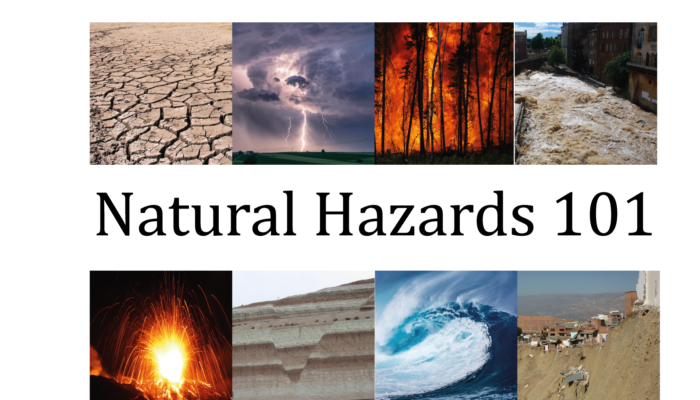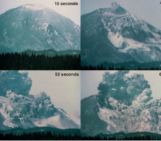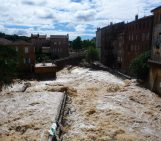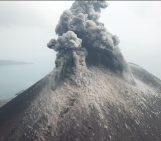
We often talk about different natural hazards, how researchers investigate them and solutions to mitigate their effects on society, infrastructures and the environment. However, we have never really stopped for a moment to define a hazard, a natural hazard and much of the terminology in the field that can sometimes be evasive and not so straightforward to understand. Thus, we start this series of posts called Natural Hazards 101, trying to provide a little guidance in this complex world. As first, let’s define together hazards and natural hazards according to recent literature.
The most simple definition of hazard one can find in a dictionary is “something dangerous and likely to cause damage”. Historically the term hazard has been commonly associated with sudden natural phenomena or with a specific material that could be hazardous [1], a more complete definition can be found in the 2009 document on the terminology in disaster reduction compiled by the United Nations Office for Disaster Risk Reduction (UN DRR). It defines a hazard as “a dangerous phenomenon, substance, human activity or condition that may cause loss of life, injury or other health impacts, property damage, loss of livelihoods and services, social and economic disruption, or environmental damage”. This definition was adopted, with minor changes, by the General Assembly of the United Nations (UNGA) in 2017. Further, in 2020 based on the most updated scientific literature on the subject, the UN DRR Hazard definition and classification review [1] accepts the above definition of hazard and, accordingly, reviews which type of events can be classified as hazards and which cannot. In particular, the review defines and lists a phenomenon as a hazard if it fulfils the following three criteria [1]:
- potential to impact at the community level.
- Proactive and reactive measures are available to prevent and reduce the risks associated.
- There is a measurable spatial and temporal component.
Hazards can be single, sequential or combined in their origin and effects [1]. Then, depending on the cause, hazards can be clustered in groups and subgroups [2]. Schneiderbauer and Ehlrich divide hazards into four main groups: natural, technological, man-made and social hazards, with further subgroups for each of them [2]. Natural hazards, the ones we are here generally more interested in on this blog, are those generated by natural phenomena like earthquakes, floods, etc. A more detailed subdivision was reported on the 2020 UN DRR review, where they separately defined different natural and non-natural hazards. These are summarized as following [1]:
1. Meteorological and hydrological hazards. They include cyclones, lightning, drought, avalanches, hail storms, tornadoes, floods, heatwaves. They result from the state of Earth’s atmosphere and its interaction with lands and oceans and the weather and climate it produces. They have been associated with 50% of all recorded disasters from 1979 to 2019.
2. Geohazards. They include earthquakes, volcanic eruptions, landslides and ground subsidence, and their origin is geological. They can trigger other hazards, for example, tsunamis, and be exacerbated by human activity, for example, a landslide triggered by heavy rainfall but exacerbated by deforestation.
3. Extraterrestrial hazards. They originate outside the Earth’s environment and include asteroid and meteorite impacts and solar flares.
4. Environmental hazards. They originate due to environmental degradation of Earth’s ecosystems via gradual, for example, the loss of permafrost and very rapid processes, such as the sudden deforestation of an area. Also, in this case, human activity can exacerbate degradation.
5. Biological hazards. They are of organic origin and include pathogens, toxins, epidemics, insect infestations and crop blight that can cause significant loss of life, affecting people, animals and plants at the population level and can lead to severe economic and environmental losses.
The above five categories can be widely included in the class of natural hazards. The next three categories complement the list of hazards and are the ones mainly of non-natural origin. They are:
6. Chemical hazards. They include hazards from organic and synthetic chemical substances with immediate (acute) effects and chronic effects, often resulting from long-term exposures with adverse health outcomes, for example, damage to the nervous and immune systems, impaired reproductive function and development, cancer and organ-specific damage.
7. Technological hazards. They originate from the failure of an existing or an emerging technology. They include all transport systems and the deployment of radiation and nuclear material at nuclear plants, explosive material. The Sendai Framework now includes Information and Communication Technology (ICT)-related hazards under this category.
8. Societal hazards. They depend on human activity and choices and derive from socio-political, economic, and cultural activity, human mobility, the use of technology, and either intentional or unintentional societal behaviour. However, there is still an ongoing debate around this category of hazard on what phenomena should or not be included, needing further research in this direction.
Finally, it is important to remember that hazards may interact and can trigger other ones creating a chain of hazard occurrences. Natural hazards provide plenty of examples of hazards chains or multi-hazards. One example is a volcanic eruption that can trigger a landslide, and if the volcano is located on an island, the landslide can trigger a tsunami. Another example is earthquake-induced tsunamis. In such scenarios, multi-hazards can occur concurrently, progressively or cumulatively over time [1].
We hope you have found this post interesting and useful. Hazards and natural hazards, in particular, are a complex and vast topic of research in geoscience, even just to define in general.
Do you have questions? Or do you want to share feedback? Feel free to leave a comment below!
References:
[1] UNDR (2020), Hazard definition and classification review.
[2] Schneiderbauer, S., & Ehrlich, D. (2004). Risk, hazard and people’s vulnerability to natural hazards. A review of definitions, concepts and data. European Commission Joint Research Centre. EUR, 21410, 40.
Read episode 2: The concept of risk.
Read episode 3: The disaster cycle.
Post edited by Asimina Voskaki, Shreya Arora.





Vanessa Cuervo Zambrano
Happy to see a dedicated blog about Natural Hazards.
Vale Cigala
Thank you, Vanessa!
Senthil B
I really great to hear the different as well as adapted definition for natural hazards
I
Thank you for your hard work!
Sains Data
Natural hazards are a complex and multifaceted phenomenon, and understanding their nature and impact requires a multidisciplinary approach. By considering the physical, social, and economic aspects of natural hazards, we can develop a more comprehensive understanding of these events and better mitigate their potential risks.
Silvia De Angeli
Thanks a lot for your comment. We agree about it. Natural hazards disaster risk assessment and management require a multi-disciplinary perspective.